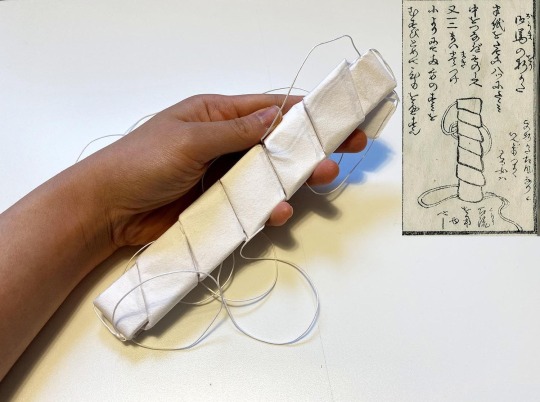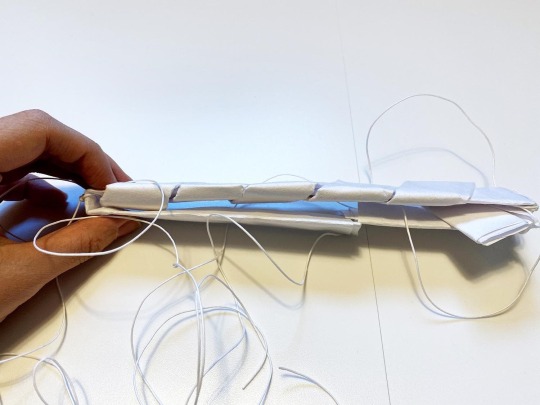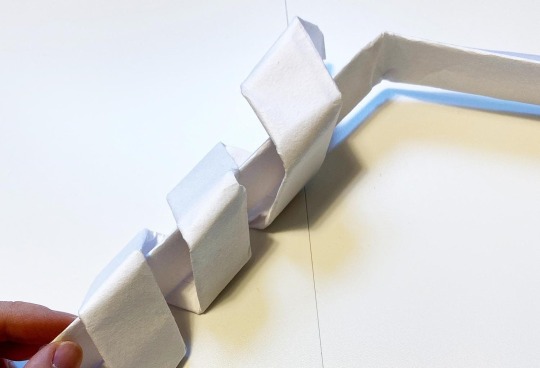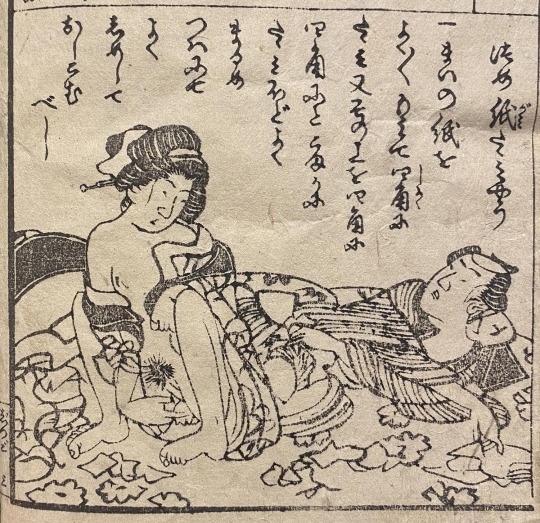#tsumeshi
Text



Cw: We are going to talk here about periods, and sex education in the past. Read this note according to your own sensibilities :)
How women dealt with periods during Edo period, article by shunga enthousiast Shungirl who made a paper pad following instructions found in makura bunko 枕文庫 - ie ancient sex books illustrated with erotic ukiyoe.
One of such makura bunko is 渓斎英泉 Keisai Eisen's 閨中紀聞-枕文庫, first published in 1822. It details Chinese remedies recipes for menstrual pains and irregularities, give tips about sex, and information about menstruations and pregnancy. From a modern point of view, some beliefs are outdated, but it was then such a bestseller it went through several reeditions.
Several words were apparently in use during Edo era to designates menstrual period: keisui 経水, gekkei 月経, tsukiyaku 月水, etc.
When girls went throught their first period, their females relatives or nannies would taught them how to deal with them. One method was to use paper as sanitary products (please note people without easy access to paper probably dealt with periods differently).
__________ 御馬 paper pads
Sanitary pads, such as the one recreated above by Shungirl, were then called mima 御馬 (probably as a pun on true "mima" which were then fine horses own by noblemen, or attached to sanctuaries as mounts for gods etc) or simply ouma お馬 ("honorable" horse).
Ouma were made from inexpensive recycled paper called Asakusagami 浅草紙. Sheets were folded 8 times, tied with twisted paper strings (koyori 紙縒), and then wrapped with another layer of folded paper. It was secured once again with paper strings.

Part of the strings could be left long so to tie around the waist, or/and pad was hold into place by wearing fundoshi 褌 loincloth (which would also help prevent leaking on inner tights).
Asakusagami quality was low (it was also used as toilet paper) so paper pads had to be changed often, meaning you had to fold quite a lot of them to go through your period!
Shungirl folded the pad above following instructions found in the book 実娯教絵抄, which provided several other "models":

__________ 詰め紙 paper tampons
Another method for dealing with periods were tampon-like paper bundles which were inserted into the vagina, the 詰め紙 (tsumeshi? I am not sure of the reading).
This method may have first appeared in red-light districts (?). Beside its use for periods, prostitutes also used those tampons as method of contraception (OP has an interesting article on this subject).

By the end of Edo period and into Meiji, paper tampons were widely used even by women who were not prostitutes - despite voices branding this method as unsanitary.
__________ About girls' coming of age rites
Menarche (first period) was an important milestone for girls, and was celebrated as such via specific rites (shochō o iwau 初潮を祝). Those differed a lot from places to places, and also depended on social status.
Celebrations would concern close family, but often spread to wider community who could received for example a festive meal (sekihan 赤飯) for the occasion (some Edo era senryû poems stress how mortifying this publicity could be!).
Interestingly, some traditions were also pretty sweet: in some places, mothers would sew 3 stiches into their daughter's underskirt (koshimaki 腰巻き) as a good luck charm, hoping their periods would last only 3 days <3
Those rites were part of coming of age traditions (seijoshiki 成女式) which marked the start of a young woman adulthood. Another example is the blackening of teeth (ohaguro お歯黒) which usually started around 16-17 years old.
Celebrating menarche publicly was a way of advertising that the girl was no longer a child and would "soon" be a bride. Yet, if menarche often took place around 13-14 years old, in reality it was somehow unusual to have girls married so soon!
Before marriage, especially in non-noble/samurai families, young women often started their sexual life via flings or yobai 夜這い ("night crawling" ie pseudo-secret nighttime encounters) before any wedding actually took place.
#cw: periods#cw: sex mention#japan#japanese history#edo period#edo era#periods#sex education#sex history#sanitary pads#tampons#paper pads#ouma#mima#paper tampons#tsumeshi#coming of age rites#ressources#references
575 notes
·
View notes